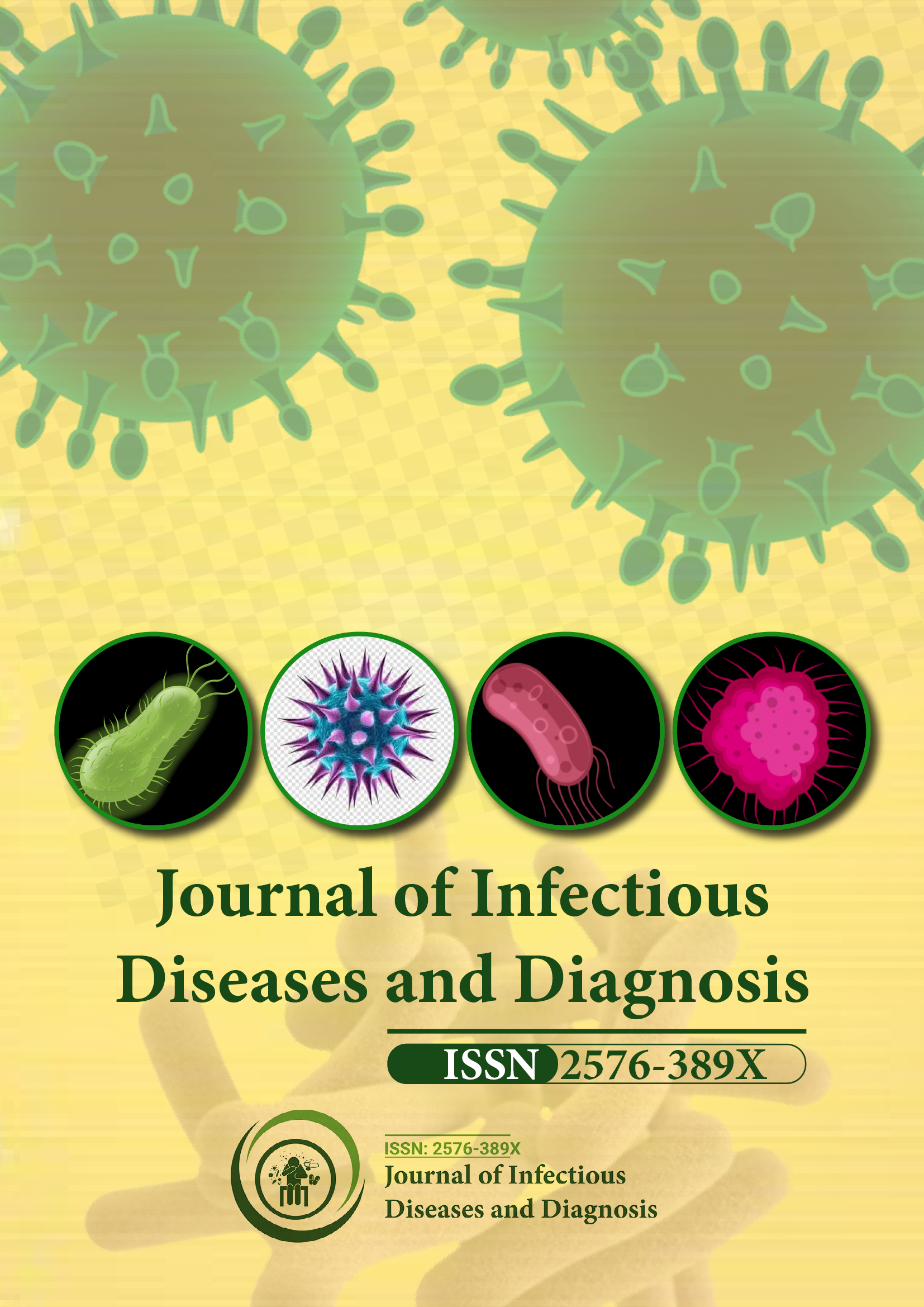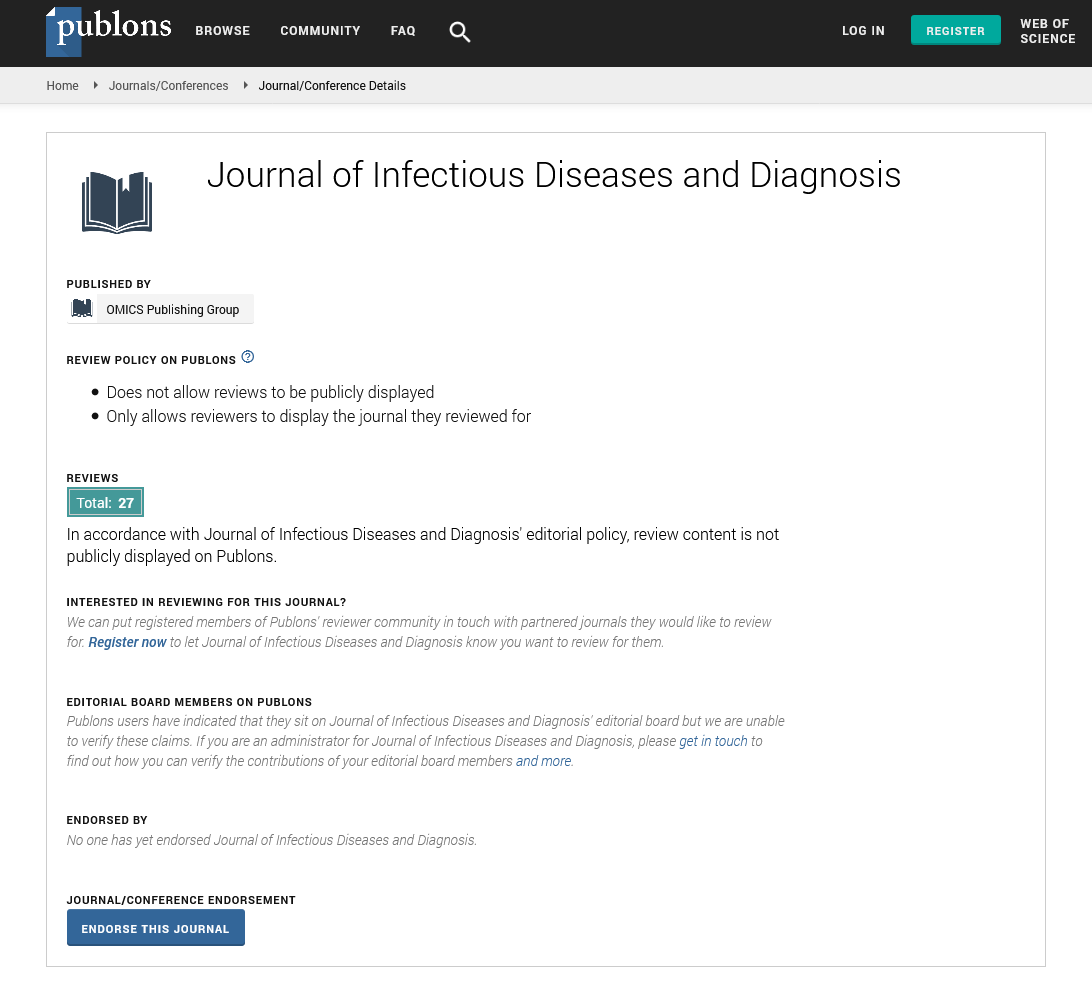Indexed In
- RefSeek
- Hamdard University
- EBSCO A-Z
- Publons
- Euro Pub
- Google Scholar
Useful Links
Share This Page
Journal Flyer

Open Access Journals
- Agri and Aquaculture
- Biochemistry
- Bioinformatics & Systems Biology
- Business & Management
- Chemistry
- Clinical Sciences
- Engineering
- Food & Nutrition
- General Science
- Genetics & Molecular Biology
- Immunology & Microbiology
- Medical Sciences
- Neuroscience & Psychology
- Nursing & Health Care
- Pharmaceutical Sciences
Opinion Article - (2023) Volume 8, Issue 1
Prevalence of Pulmonary Infections among Neutropenic Patients
Zhicong Yang*Received: 02-Jan-2023, Manuscript No. JIDD-23-20473; Editor assigned: 04-Jan-2023, Pre QC No. JIDD-23-20473 (PQ); Reviewed: 18-Jan-2023, QC No. JIDD-23-20473; Revised: 25-Jan-2023, Manuscript No. JIDD-23-20473 (R); Published: 01-Feb-2023, DOI: 10.35248/2576-389X.23.08.197
About the Study
Infectious lung disease is a common and serious complication in neutropenic patients, who are individuals with a decreased number of white blood cells, particularly neutrophils, which play a critical role in the body's defense against infections. This commentary will analyze the incidence of infectious lung disease in neutropenic patients and the factors that contribute to its development.
Incidence: The incidence of infectious lung disease in neutropenic patients is high and can range from 30%-70%. This high incidence is due to several factors, including a decreased ability to mount an effective immune response to infections, exposure to healthcare-associated pathogens, and the presence of underlying lung disorders. Neutropenic patients are particularly vulnerable to infections, as their decreased white blood cell count makes it difficult for their bodies to fight off infections.
Contributing factors: Several factors contribute to the high incidence of infectious lung disease in neutropenic patients, including underlying medical conditions, exposure to infectious agents, and the use of immunosuppressive drugs. Patients with underlying lung disorders, such as Chronic Obstructive Pulmonary Disease (COPD) or asthma are at increased risk for developing infectious lung disease. Additionally, exposure to infectious agents in healthcare settings, such as hospitals or longterm care facilities, can increase the risk of transmission to neutropenic patients. The use of immunosuppressive drugs, such as corticosteroids, can also contribute to the development of infectious lung disease by decreasing the body's ability to fight off infections.
Clinical presentation
Infectious lung disease in neutropenic patients can present in several different ways, including pneumonia, bronchitis, and bronchiolitis. The symptoms of infectious lung disease in neutropenic patients may be similar to those seen in nonneutropenic patients, including fever, cough, and shortness of breath. However, in severe cases, neutropenic patients may also experience chest pain, rapid breathing, and cyanosis, a condition in which the skin and mucous membranes turn blue due to a lack of oxygen.
Diagnosis
The diagnosis of infectious lung disease in neutropenic patients can be challenging, as the symptoms may be similar to those seen in other lung disorders. A thorough medical history and physical examination, as well as diagnostic tests, such as chest X-rays, CT scans, and pulmonary function tests, can help to establish a diagnosis. In addition, laboratory tests, including blood cultures, sputum cultures, and bronchial washings, can help to identify the specific causative agent of the infectious lung disease.
Treatment
The treatment of infectious lung disease in neutropenic patients is based on the underlying cause and the severity of the disease. Antibiotic therapy is the mainstay of treatment for bacterial infections, while antifungal therapy is used to treat fungal infections. In severe cases, hospitalization and mechanical ventilation may be necessary. Additionally, measures to support the patient's respiratory function, such as supplemental oxygen, may be required.
Prevention
To prevent the development of infectious lung disease in neutropenic patients, several preventive measures can be taken. These include maintaining good hand hygiene, using personal protective equipment, and avoiding close contact with individuals with infectious diseases. Additionally, neutropenic patients should receive regular vaccinations, such as the pneumococcal vaccine, to help protect against bacterial infections.
Conclusion
Infectious lung disease is a common and serious complication in neutropenic patients. The incidence of infectious lung disease in neutropenic patients is high and can range from 30%-70%. Contributing factors to its development include underlying medical conditions, exposure to infectious agents, and the use of immunosuppressive.
Citation: Yang Z (2023) Prevalence of Pulmonary Infections among Neutropenic Patients. J Infect Dis Diagn. 8:197.
Copyright: © 2023 Yang Z. This is an open-access article distributed under the terms of the Creative Commons Attribution License, which permits unrestricted use, distribution, and reproduction in any medium, provided the original author and source are credited.

